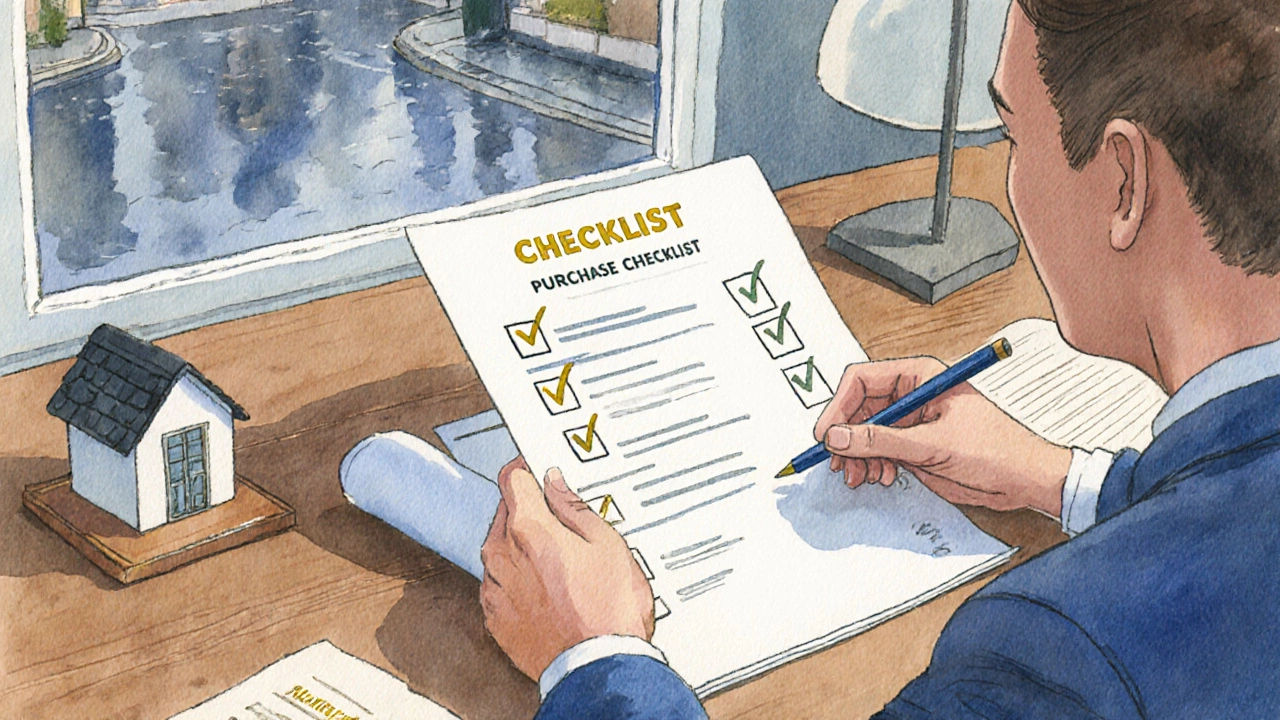50% Rule Calculator for Rental Properties
Calculate Your Rental Property Cash Flow
Use the 50% rule to estimate operating expenses and determine if your property will generate positive cash flow.
Operating Expenses
$0.00
Cash Flow Before Mortgage
$0.00
Mortgage Payment
$0.00
Final Cash Flow
$0.00
When you’re eyeing a buy‑to‑let deal, the first number you’ll hear is the 50% rule a quick‑fire guideline that says roughly half of your gross rent should go toward operating expenses. It’s not a magic formula, but it’s a handy sanity check before you get lost in spreadsheet madness.
Why the 50% Rule Matters for Landlords
In a market where property prices keep climbing, a simple rule of thumb helps you separate potential cash‑flow winners from money‑sinks. By estimating that 50% of gross rental income will be eaten by expenses, you can decide in minutes whether a property is worth a deeper dive.
Breaking Down the Numbers
Let’s start with the three core figures you’ll need:
- Monthly gross rental income the total rent you expect to collect each month before any costs are deducted.
- Estimated operating expenses ongoing costs like insurance, repairs, utilities, property management fees, and taxes.
- Your monthly mortgage payment the principal and interest you owe on any loan used to purchase the property.
The rule assumes operating expenses settle at about 50% of the gross rent, leaving the other half to cover the mortgage and any profit.
Step‑by‑Step Calculation
- Step 1: Find the property’s expected monthly rent. If you’re looking at a $1,200 weekly rent, that translates to roughly $5,200 a month.
- Step 2: Multiply that figure by 0.5. In our example, $5,200 × 0.5 = $2,600. That’s the rough amount you should budget for operating costs.
- Step 3: Subtract the estimated expenses from the gross rent to get the net cash flow the money left after covering all operating expenses but before mortgage payments. $5,200 - $2,600 = $2,600.
- Step 4: Deduct your mortgage payment. If the loan costs $1,800 per month, the final cash flow is $2,600 - $1,800 = $800.
If the final cash flow is positive, the property passes the 50% rule test. If it’s negative, you either need to renegotiate the rent, lower your expenses, or look for a cheaper loan.
Real‑World Example: A Two‑Bedroom in Auckland
Imagine a two‑bedroom unit in Auckland’s suburb of Mt. Eden. Current market rent for that unit sits at NZ$550 per week, or about NZ$2,380 per month. Applying the 50% rule:
- Estimated operating expenses: NZ$2,380 × 0.5 = NZ$1,190.
- Net cash flow before loan: NZ$2,380 - NZ$1,190 = NZ$1,190.
- Assume a 30‑year mortgage at 5.5% interest on a NZ$600,000 purchase price with a 20% down payment. The monthly payment works out to roughly NZ$2,730.
- Final cash flow: NZ$1,190 - NZ$2,730 = -NZ$1,540.
In this case, the property fails the 50% rule because the mortgage outweighs the cash left after expenses. The landlord would either need a higher rent, a lower purchase price, or a larger down payment to bring the numbers back into the green.
When the 50% Rule Breaks Down
It’s a great shortcut, but it’s not foolproof. Here are three common scenarios where the rule can mislead:
- High‑end properties: Luxury rentals often have lower expense ratios because tenants cover many utilities. The rule may over‑estimate costs.
- Low‑maintenance markets: Some regions (e.g., parts of the Midwest US) have inexpensive repairs and insurance, pushing actual expenses closer to 30%.
- Short‑term rentals: Platforms like Airbnb generate higher gross rent but also higher turnover costs, so the 50% figure can be too low.
In these cases, adjust the expense percentage to reflect local realities, or run a full cash‑flow model.

Comparing the 50% Rule to Other Quick Guidelines
| Rule | Typical Expense % of Gross Rent | Best‑Fit Property Type |
|---|---|---|
| 30% Rule | 30% | Low‑maintenance single‑family homes in cheap markets |
| 50% Rule | 50% | Standard buy‑to‑let apartments in moderate cost areas |
| 70% Rule | 70% | High‑turnover short‑term rentals or properties with heavy management fees |
Pick the rule that mirrors the rental style you’re pursuing. The 50% rule lands in the middle and works for the most common long‑term rentals.
Tips for Using the 50% Rule Effectively
- Validate local expense norms: Talk to a property manager or check recent expense reports for similar units.
- Factor in vacancy: A realistic vacancy rate (usually 5‑10% in most markets) should be added to your expense estimate.
- Don’t forget property management fees charged by a management company, typically 8‑12% of the monthly rent if you aren’t self‑managing.
- Run the numbers for a few years: A one‑year snapshot can hide future spikes in insurance or major repairs.
- Calculate your cash‑on‑cash return the annual pre‑tax cash flow divided by the total cash invested. The 50% rule helps you get a quick cash‑flow estimate, but the return metric tells you whether the investment meets your financial goals.
Quick Checklist Before You Sign the Offer
- Confirm expected gross rent with at least three comparable listings.
- Apply the 50% rule to estimate operating expenses.
- Subtract mortgage payment to see if cash flow stays positive.
- Adjust for vacancy, management fees, and any upcoming major repairs.
- Run a cash‑on‑cash return calculation. Aim for at least 8‑10% in most markets.
What exactly does the 50% rule cover?
The rule assumes that roughly half of the gross monthly rent will go toward operating expenses such as insurance, property taxes, repairs, utilities, and property‑management fees. It does not include the mortgage payment or capital expenditures.
Is the 50% rule suitable for short‑term rentals?
Short‑term rentals usually have higher turnover costs and cleaning fees, so expenses can easily push past 50% of gross rent. Many investors use a 70% rule for those properties, or they build a detailed cash‑flow model instead of relying on a single shortcut.
How do I adjust the rule for vacancy?
Add an extra 5‑10% of the gross rent to your expense estimate. For example, on a $2,000 monthly rent, allocate $200‑$400 for potential vacancy loss before applying the 50% expense factor.
Can I rely solely on the 50% rule to pick a property?
No. It’s a quick screen. After a property passes the rule, you should still run a full cash‑flow analysis, consider market trends, and assess long‑term appreciation potential.
What’s a good cash‑on‑cash return for a buy‑to‑let?
In most stable markets, investors aim for 8‑10% before taxes. Higher‑risk markets might target 12‑15% to compensate for volatility.
